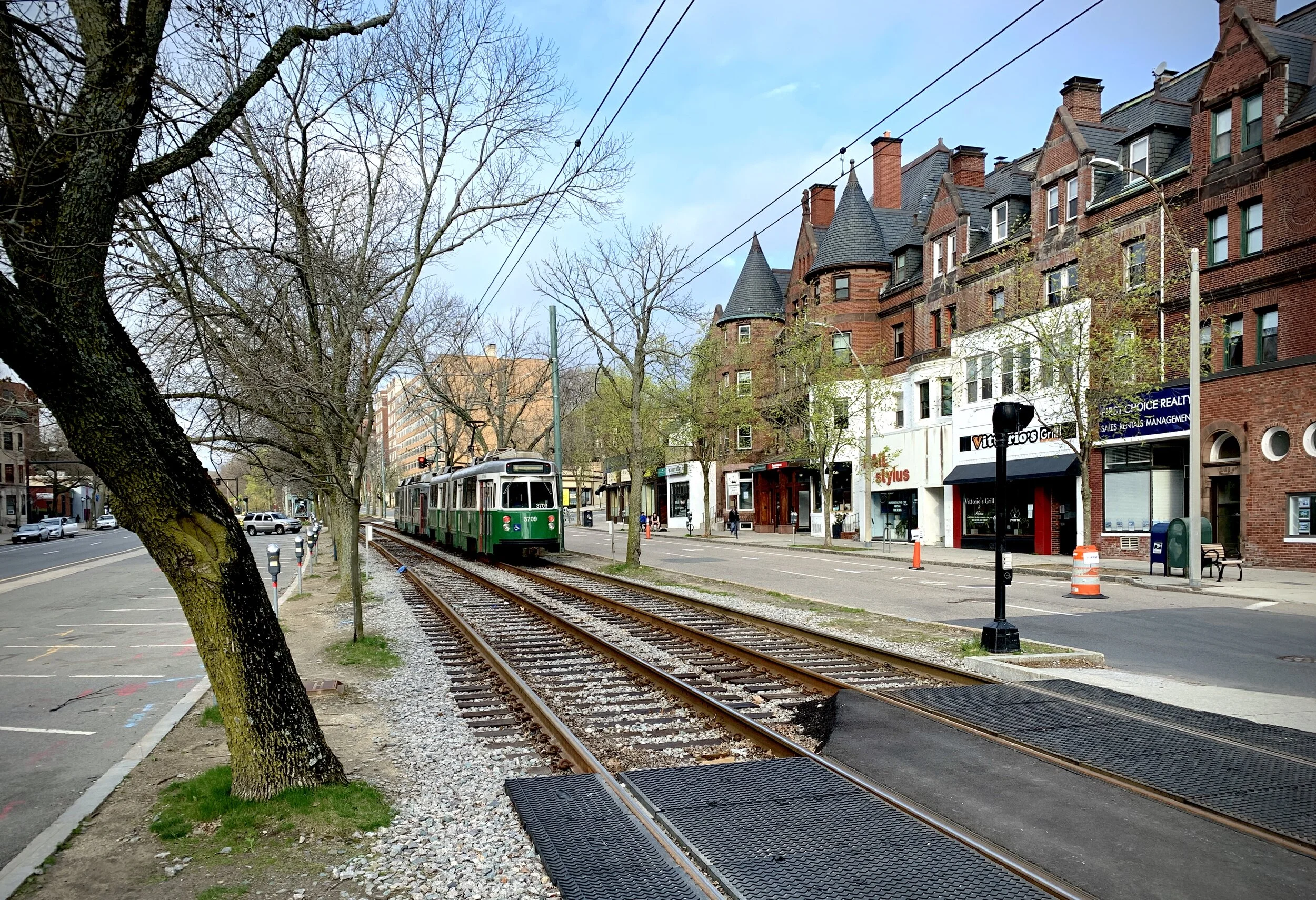In public: notes from Beacon Street
“Times of crisis can have the quality of deepening our perceptions, of revealing that which awaits just beneath the surface. The Emerald Necklace is social mobility infrastructure guised as green space. Beacon Street is a social space hidden in mobility infrastructure. To borrow a phrase from a different radical moment, sous les pavés, le parc.”
My photo of Beacon Street in Brookline, empty during the first weeks of the COVID-19 pandemic.
The COVID-19 pandemic strained social bonds and infrastructures of neighborhoods. Public life slowed to a trickle or ceased altogether. In the early weeks of the crisis, I wrote a dispatch from my neighborhood in Brookline, MA, whose main thoroughfare was designed by Frederick Law Olmsted. “Over the past weeks,” I reported, “I’ve spent more time staring at this landscape than I had ever imagined possible, amid an eternity of e-mails and Zoom conferences; a lifetime of listlessness and egg sandwiches.”
Published by Landscape Architecture Magazine as part of a series of reflections by writers across the U.S., my piece surveyed some of the ways that our shared spaces had responded to the pressures of the health crisis. I spoke with parks stewards, economic development experts, sociologists. I shared observations from my perch at the window of my makeshift home office. And I conducted a kind of seance with the spirit of Olmsted, whose plan of Beacon Street was intended as a doubly democratic gesture — a public space bisected by public transit.
More than anything, I worried, as did so many of my colleagues and friends, that the restrictions caused by the pandemic might further deplete shared social infrastructures and lead to stricter surveillance, xenophobia, and privatization of the public realm.
⸻
I’m indebted for their insights to Northeastern University’s Dan O’Brien, economist Gustavo Quiroga, and Karen Mauney-Brodek, who leads the Emerald Necklace Conservancy.

